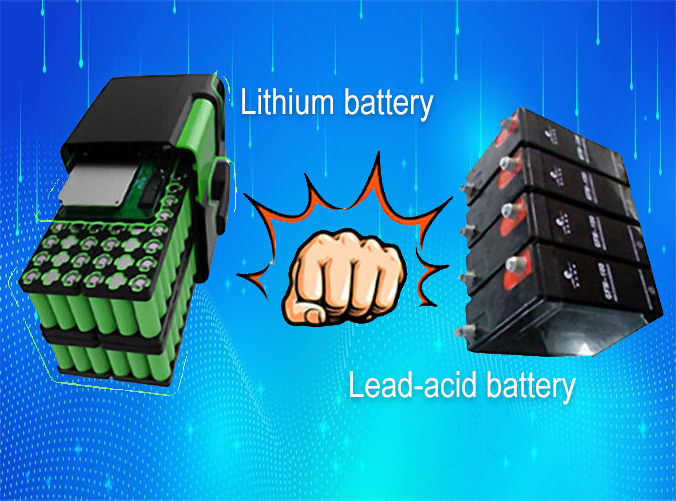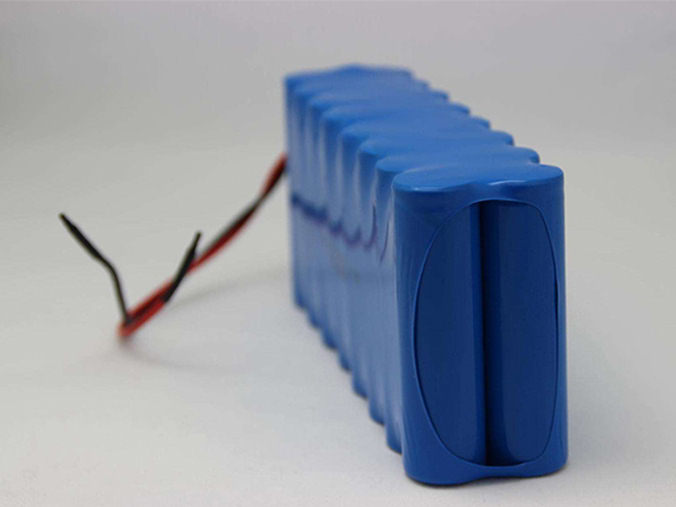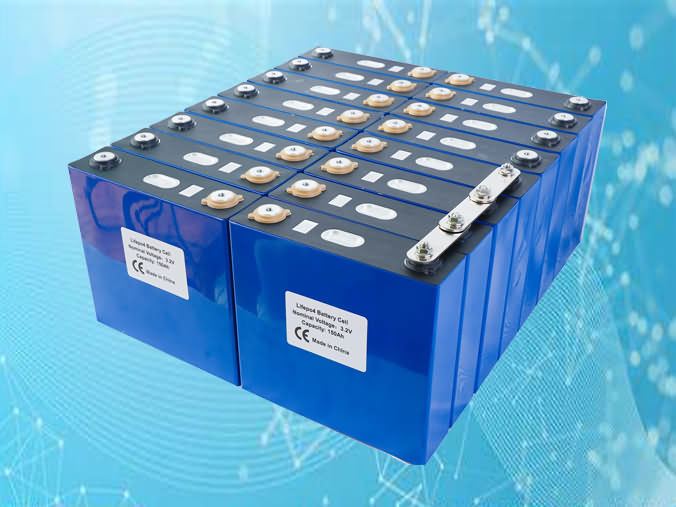What are the technical parameters of lithium battery?
Upload Time:
Dec 16, 2023
Eight main parameter index values of lithium battery:1. Capacity;2. Energy density;3. Charge discharge ratio;4. Operating voltage;5. Service life;6. Internal resistance;7. Self discharge;8. Operating temperature range
1. Capacity
Everyone is very concerned about this main parameter. It has been popularized for a long time. When we apply smart machines, our major concern is that the power is insufficient. We must often charge the battery, and sometimes we can’t find a local battery to charge. In the early stage, all normal applications, fully charged batteries can be shut down for 3 ~ 5 days, and some commodities can even be shut down for more than 7 days. However, in the era of intelligent machines, endurance looked terrible. One of the key reasons is that the power consumption of mobile phones continues to increase, while the capacity of rechargeable batteries has not increased by the same proportion.
The capacitance unit is generally “MAH” (milliampere) or “ah” (ampere hour), which can be divided into short-circuit capacity and specific volume in application. Short circuit capacity refers to the total power consumption that can be produced when a fully charged lithium battery is charged and discharged to the cut-off voltage at a special charge and discharge rate (C-rate) under the laboratory standard (ideal temperature and humidity natural environment). Generally, the specific capacitor is not equal to the rated capacitor, which is immediately related to temperature, ambient humidity, battery charging rate, etc. Generally speaking, the specific capacitor is slightly smaller than the rated capacitor, and sometimes even smaller than the rated capacitor. For example, in winter in northern China, if the mobile phone is used outdoors, the battery power will decrease rapidly.
2. Energy density
The utility model relates to a rechargeable battery with unit volume or net weight of an enterprise that can store and release electric energy. It has two types: WH / kg and WH / L, which respectively indicate net weight energy density and volume energy density. This power consumption is the integral of the volume (ah) and the working standard voltage (V). The index value of specific energy plays a more guiding role than volume in application.
With the current technology of lithium battery, the specific energy level can be about 100 ~ 200wh / kg, which is still low, and has become a short board for the application of lithium battery in many places. The same problem also arises in the pure electric vehicle industry, because the specific energy of the rechargeable battery is strictly limited in volume and net weight, which promotes the pure electric vehicle to achieve the highest mileage at one time, so it has the unique proper term “mileage anxiety”. If the mileage of a battery car is 500 km (very different from that of a traditional gasoline car), the specific energy of a single rechargeable battery must be above 300wh / kg.
The improvement of the specific energy of rechargeable battery is a slow whole process, which is far less than Moore’s law in the field of integrated circuit chips, which leads to the scissors difference between the improvement of the characteristics of electronic devices and the improvement of the specific energy of rechargeable battery, and it will become larger and larger with the change of time.
3. Charge discharge ratio
This index value will endanger the continuous current and maximum current of lithium battery during operation. Generally, enterprises are C (class), such as 1 / 10C, 1 / 4C, 1C, 4C and 10C. For example, the short-circuit capacity of a rechargeable battery is 10Ah. If its rated battery charging multiple is 1C, it means that the rechargeable battery of this model and specification can charge the battery several times with a current of 10A until the cut-off voltage of battery charging or charging and discharging has passed. If the larger charge discharge multiple is 10C@10s , the charging multiple of the larger battery is 4C@10s , the rechargeable battery can be continuously charged and discharged for 10 seconds at 100A current and continuously charged for 10 seconds at 50A current.
The continuous output power and maximum output power can be obtained by multiplying the current matching the charge and discharge multiple of lithium battery by the working standard voltage. The more detailed the charge discharge multiple index value is defined, the more instructive it will be in application. In particular, the lithium battery as an electric power transmission device must require the continuous single pulse polyploidy index value under different temperature standards to ensure that it is within the scope of reasonable use.
4. Operating voltage
The working voltage of lithium battery includes open circuit voltage, working standard voltage, battery charging cut-off voltage, charge discharge cut-off voltage and other main parameters, which are not discussed independently in this paper, but mainly shown.
Working condition working voltage, i.e. the electric potential difference between the positive stage and the negative stage obtained by accurate measurement when the external load of the rechargeable battery or the switching power supply is in the running state and there is electric flow passing through. Generally speaking, due to the existence of resistance in the battery, the working standard voltage during charging and discharging is less than the open circuit voltage, and the battery charging is higher than the open circuit voltage.
Battery charging cut-off voltage refers to the maximum and minimum working standard voltage allowed by the battery. Beyond this level, it will cause certain irreversible damage to the rechargeable battery, reduce the battery performance, and even cause fire accidents, explosions and other safety production accidents in serious cases. The open circuit voltage and working standard voltage of lithium battery pack have a certain corresponding relationship with the volume of lithium battery pack.
5. Service life
With the application and storage, the service life of lithium battery will slowly decay coefficient and have more significant main performance. Let’s take the smart phone as an example. On the mobile phone that has been used for a period of time, it is obvious that the rechargeable battery on the mobile phone is not durable. At the beginning, it is likely to be charged only once a day, and then it is likely to be charged twice a day. It is the main manifestation of the reduction in the number of battery cycles.
The service life of lithium battery can be divided into cycle time service life and schedule service life. Cycle time cycle time is generally based on frequency, indicating the charging frequency of rechargeable battery recyclable system battery. Naturally, there are standards. Generally, the deep battery charging is carried out according to the rated battery charging current (100% or 80% DoD) under the idealized temperature and ambient humidity, and the cycle system frequency when the battery power attenuation coefficient reaches 80% of the short-circuit capacity is calculated.
The definition of the service life of the schedule is more complicated. The rechargeable battery is unlikely to be charged by the battery all the time, stored and idle, or under the ideal natural environment standard. It will experience various temperature and humidity standards, and the battery charging rate is changing at any time. Therefore, the specific service life must be simulated and tested. To put it simply, the service life of the schedule is the interval between the stopping standard of the service life of the rechargeable battery (such as the volume attenuation coefficient to 80%) according to the special operation state under the special application natural environment standard. The application deadline of the schedule is closely related to the actual application regulations. Generally, the actual application standards, natural environment standards and storage time must be required.
The service life of the schedule is more practical than that of the cycle time. However, because the accurate measurement of the service life of the schedule is very complex and takes too long, the general rechargeable battery manufacturers only get the data information of the service life of the cycle time. If you have to obtain the data information of the service life of the calendar, you generally have to pay for it, and you have to wait for a long time.
6. Internal resistance
The internal resistance of lithium battery refers to the friction resistance caused by the current according to the internal of the rechargeable battery in the whole process of work. It includes ohmic internal resistance and electrodeposited internal resistance, while the electro polarized internal resistance includes photocatalysis electrodeposited internal resistance and concentration polarization internal resistance.
Electrolytic resistance consists of metal electrode, lithium battery electrolyte, diaphragm resistor and a part of circuit resistance. Electrochemical internal resistance refers to the resistance caused by polarization in electrochemical corrosion, including organic chemical polarization and concentration polarization.
Generally, the internal resistance value of the enterprise is milliohm bus (m Ω). The rechargeable battery with large internal resistance value consumes large internal output power and burns seriously when the battery is charged, which will accelerate the embrittlement of the rechargeable battery and reduce the service life attenuation coefficient. In addition, it also limits the application of large space battery charging. Therefore, the smaller the internal resistance, the longer the service life and multiple of lithium battery.
7. Self discharge
When placed, the volume of rechargeable battery decreases continuously. The rate of volume reduction is called lithium battery life rate, which is generally expressed as a percentage:% / month.
Self charging and discharging is something we don’t want to see. A rechargeable battery filled with electricity will greatly reduce the power consumption after it is put on for a few months. Therefore, we expect that the lower the self charging and discharging ratio of lithium battery, the better.
It should be noted here that once the lithium battery life of the lithium battery causes the power loss of the rechargeable battery, the harm is generally irreversible. Even if the battery is recharged, the usable volume of the rechargeable battery will be greatly reduced and the service life of the rechargeable battery will be rapidly reduced. Therefore, for long-term storage of unused lithium batteries, we must remember to charge the batteries on time to prevent power loss due to the service life of lithium batteries and great harm to their characteristics.
8. Operating temperature range
Due to the characteristics of compounds, lithium battery has an effective operating temperature range (generally the material is between – 40 ℃ ~ 60 ℃). If the application temperature exceeds this range, it will cause great harm to the battery performance.
Relevant News









